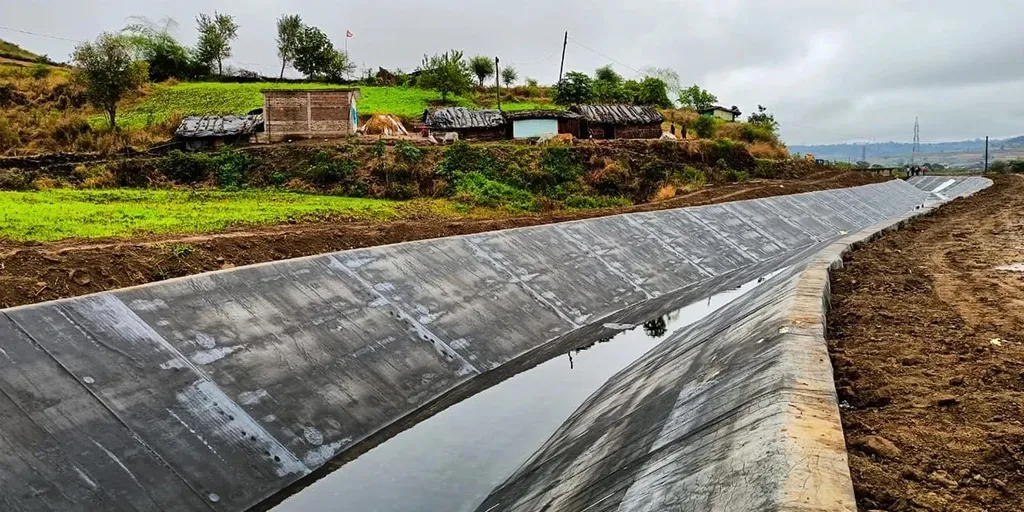In the quest for sustainable water management, a groundbreaking study published in *MethodsX* introduces a novel canal lining method that promises to revolutionize irrigation efficiency. The research, led by Parul Gajbhiye from the Mukesh Patel School of Technology Management & Engineering at SVKM’s NMIMS in Mumbai, India, addresses the longstanding issues of seepage, erosion, and structural deterioration in conventional canal linings.
The innovative solution combines composite geotextile with interlocking composite concrete plates reinforced by steel bars. This integrated system not only simplifies installation but also significantly enhances the durability and impermeability of canal linings. “The production process begins with placing a composite geotextile fabric, which serves as a filtration and stabilization layer,” explains Gajbhiye. “This layer enhances erosion control and load distribution. Prefabricated concrete plates, designed with admixtures to increase strength and durability, are then interlocked and reinforced with steel bars to provide additional crack resistance and structural stability.”
The practical implications for the agriculture sector are substantial. By mitigating seepage and structural damage, this method can reduce water losses and extend the service life of irrigation canals. Laboratory investigations have demonstrated a 12% increase in crushing strength and a 30% improvement in load-carrying capacity, confirming the reliability and sustainability of the proposed solution.
“This study introduces a production method for canal lining that integrates interlocking composite concrete plates, reinforced with bars and composite geotextile, designed to mitigate seepage, structural damage, and sedimentation while improving load distribution and durability,” Gajbhiye notes. The developed method not only supports environmentally sustainable water management practices but also has practical applications in agriculture and resource conservation.
The commercial impact of this research could be profound. Farmers and agricultural enterprises stand to benefit from reduced water wastage and improved irrigation efficiency, leading to higher crop yields and more sustainable farming practices. As water scarcity becomes an increasingly pressing global issue, innovations like this are crucial for ensuring food security and environmental sustainability.
Looking ahead, this research could shape future developments in the field by inspiring further advancements in materials science and construction techniques. The integration of composite materials and geotextiles in canal lining represents a significant step forward in sustainable infrastructure development. As the agriculture sector continues to seek innovative solutions to water management challenges, this study offers a promising path forward.

